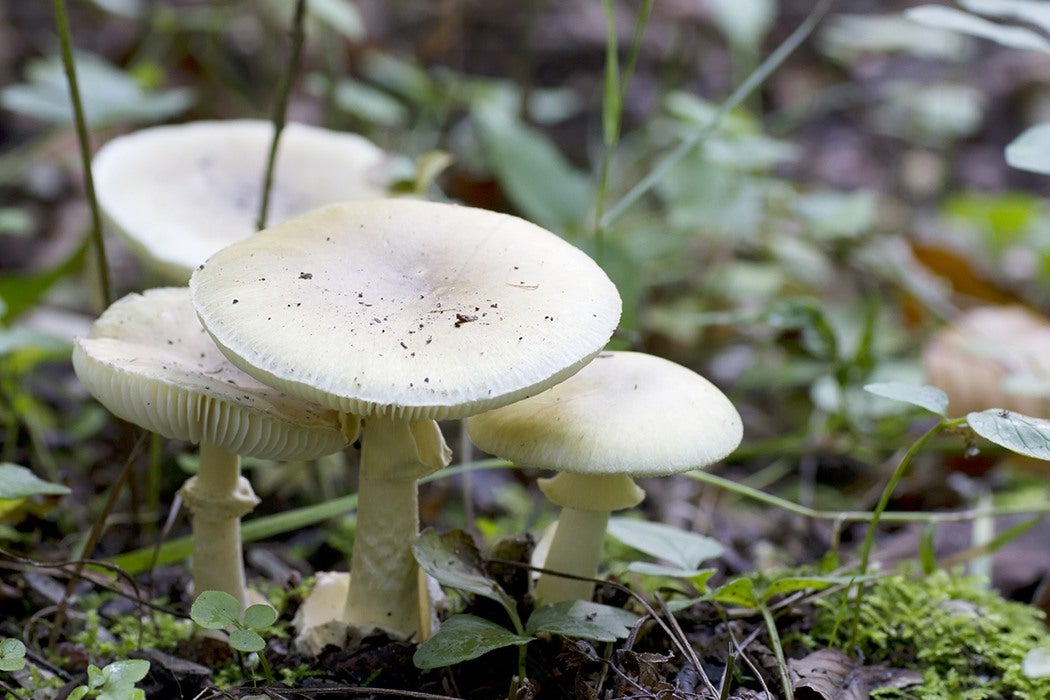Be careful when eating wild mushrooms! In the last couple of months, fourteen Californians have learned the hard way when they accidentally ate highly poisonous “Death Cap” mushrooms. These mushrooms have now spread to several continents and are a common source of poisonings. All fourteen will survive, but several victims were severely injured and some will have lifelong medical needs after requiring emergency liver transplants. Death cap mushrooms can easily be fatal.
Why do mushrooms even have poison? The mushroom is usually the mature reproductive phase of the fungus life cycle, producing the spores that will become the next fungus generation. If a mushroom is destroyed before the spores are ready for dispersal, the fungus might not reproduce. The prevailing theory is that mushroom poison evolved to limit predation on the mushroom before the spores are released. This only works, however, if would-be predators know that a mushroom is poisonous.
In this regard, mushroom warning systems can be tricky. Many organisms that are noxious to eat advertise their unpalatable nature with bright colors known as aposematic coloration (think of monarch butterflies or the brightly colored poison dart frogs). Some poisonous mushrooms do seem to exhibit aposematic colors, however, many highly poisonous mushrooms are non-descript.
This is the case with the death cap, Amanita phallosis. It is a plain, beige mushroom that closely resembles several edible species. Some mushrooms may broadcast an olfactory warning to would be predators, but these odors are lost on humans with our inferior sense of smell. There are a variety of folk tests for mushroom edibility, but none are considered reliable.
When people do accidentally eat the poisonous mushrooms, the symptoms take several hours to appear, and victims don’t always make the connection. Severe vomiting, diarrhea, dehydration, and dangerously low blood pressure can occur. The death cap toxins (amatoxins) interfere with transcription in certain liver cells, and liver failure or death can result.
Treatment options are limited. Patients are kept hydrated, and symptoms such as respiratory or blood-clotting troubles can be treated. Activated charcoal can absorb any toxin that has not-yet been taken by the liver, so rapid treatment can be helpful.
The heavy west coast rains last winter created perfect conditions for death caps, and increases in poisonings have occurred in previous years under similar circumstances. Boiling or cooking do not help; these mushrooms remain toxic. For those determined to gather wild mushrooms, make sure that a genuine expert identifies every single mushroom before you eat it.







